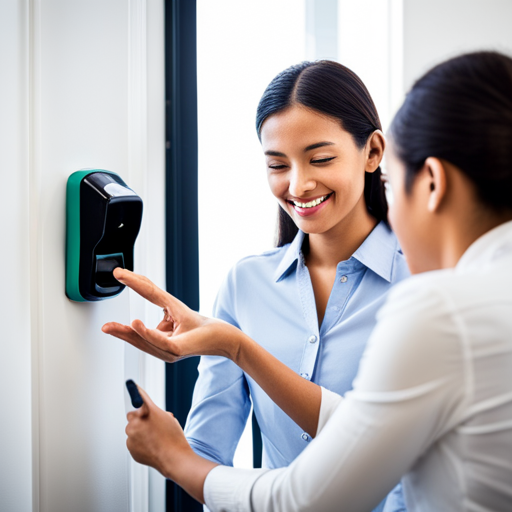Biometric Authentication in Access Control
Discover the power of biometric authentication in access control. How biometrics like fingerprint and facial recognition redefine security in various situations.

Benefits of Biometric Authentication in Access Control:
Enhanced Security: Biometric authentication provides a high level of security by relying on unique physical or behavioral traits, reducing the risk of unauthorized access.
Non-Transferable: Biometric traits such as fingerprints or iris scans cannot be easily duplicated or shared, making it difficult for unauthorized individuals to gain access.
Convenience: Biometric authentication is quick and easy for authorized users, eliminating the need for keys or cards.
Reduced Fraud: Biometrics reduce the risk of identity fraud as it’s difficult to impersonate someone’s biometric traits.
Audit Trail: Biometric systems can log access events, creating a comprehensive audit trail for security monitoring and compliance.
Customization: Access permissions can be easily customized for different individuals and areas, enhancing control.
No Lost Credentials: Users can’t lose or forget their biometric traits, reducing the administrative burden of reissuing access credentials.
Applications of Biometric Authentication in Access Control:
Physical Access Control: Biometrics secure entrances to buildings, rooms, and secure areas in various industries, including commercial, government, and healthcare.
Time and Attendance: Biometric systems track employee attendance, ensuring accurate records and preventing buddy punching.
Data Centers: Biometric authentication secures access to critical IT infrastructure, protecting sensitive data.
Healthcare: Biometrics restrict access to patient records, pharmaceutical storage, and restricted medical areas.
Financial Services: ATMs, bank vaults, and secure areas in financial institutions use biometrics for access control.
Residential Security: Smart locks with biometric authentication enhance home security.
Airports: Biometrics streamline passenger processes and enhance security in airports, including passport control and employee access.
Government Facilities: Biometrics secure access to government buildings and sensitive areas.
Education: Schools and universities use biometrics for secure access to classrooms and labs.
Use Cases of Biometric Authentication in Access Control:
In the ABCD R&D facility, employees need access to highly secure labs and research areas. To ensure the utmost security and streamline access, the company has deployed biometric authentication. ABCD Company is a leading technology firm with a state-of-the-art research and development facility. They have implemented biometric authentication for access control in their premises.
Fingerprint Scanners: Employees and residents use fingerprint scans for entry.
Facial Recognition: Access is granted based on facial features, often used in airports and commercial settings.
Iris Scans: High-security environments like data centers may use iris scans for access.
Voice Recognition: Voice authentication can be used in telephone-based access control systems.
Palm Vein Scanning: Some systems use palm vein patterns for access, which are unique to each person.
Retina Scans: Retina scans provide a high level of security and are used in top-tier secure facilities.
Behavioral Biometrics: Keystroke dynamics, gait analysis, and other behavioral traits can also be used for authentication.